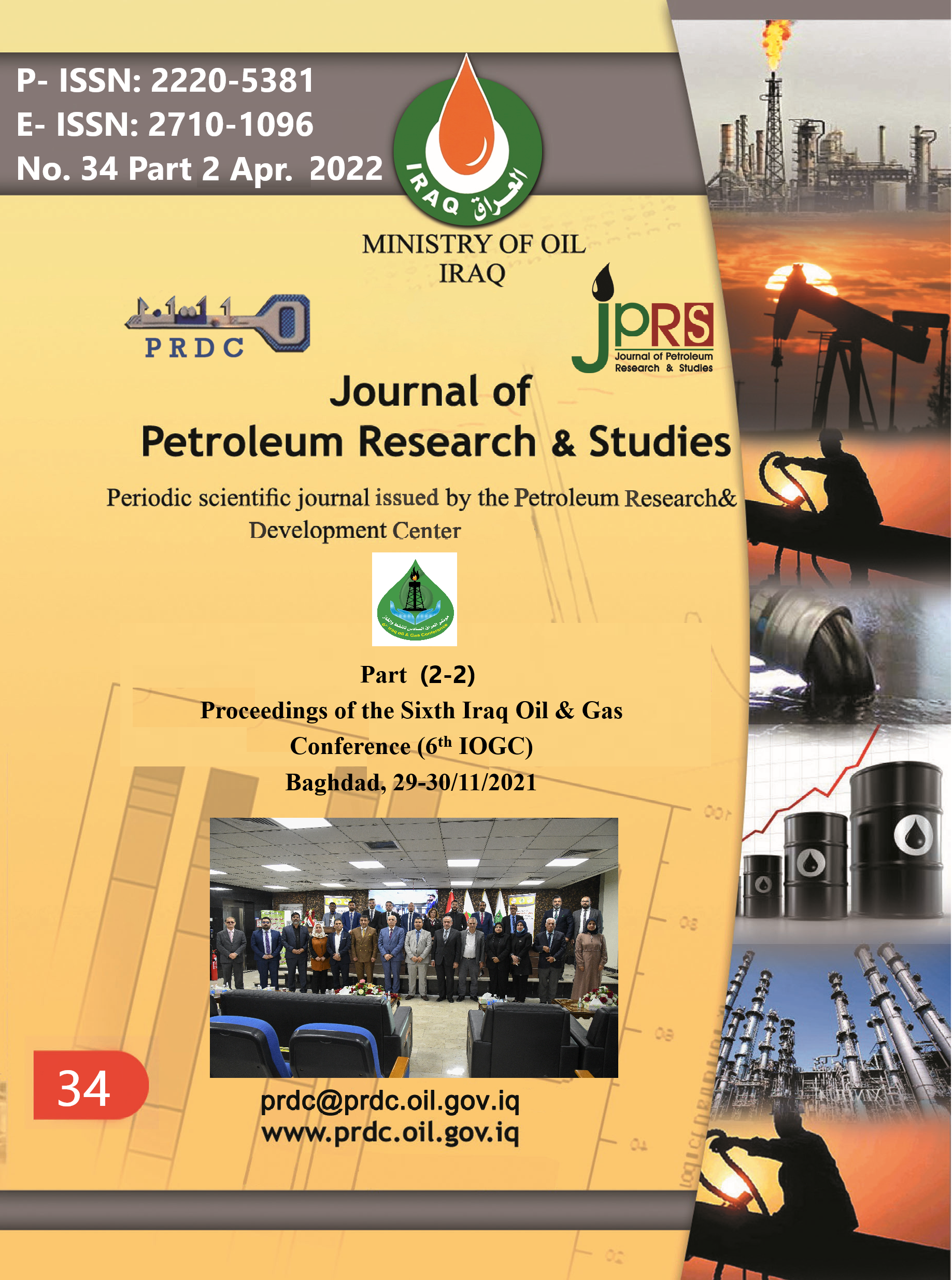Integrating CPI and Core Data into Logistic Regression for Lithofacies Modeling
DOI:
https://doi.org/10.52716/jprs.v12i1(Suppl.).627Keywords:
Geostatistical, classification, lithofacies, reservoir characterization, hydrocarbon, porosity, permeability.Abstract
The lithofacies classification research is part of an extended multidisciplinary reservoir characterization and simulation study that has been implemented on the upper shale member/Zubair formation of the southern Iraqi X oil field. This study has been conducted through the Integrated Reservoir Management School (IRMS) at the Basrah Oil Company (BOC). Lithofacies classification is a process to determine rock lithology by analyzing core and well- log data set. Traditionally, lithofacies were classified manually or with the use of some graphing approaches. Many artificial intelligence techniques have recently been adopted to categorize lithofacies. In this work, two robust algorithms were applied to modeling the lithofacies through specific well section (formation), these procedures were adopted and their results were compared to determine more accurate lithofacies classification method. Logistic Boost Regression LBR and Multinomial Logistic Regression MLR were utilized to model the resulting lithofacies as a function of CPI dataset in order to anticipate discrete properties distribution in non-cored depth in wells.
CPI data, which are available for 49 wells in the upper shale Zubair formation, includes: water saturation, porosity (∅_neutron) and volume of shale (V_sh). However, routine core analyses of permeability, porosity and facies are existent for only one well. For that well, the lithofacies types are sand, silty sand and shale. Two supervised statistical learning techniques, LBR and MLR, has been certified to model the discrete lithofacies distribution as a function of the CPI records. The lithofacies classification was then validated through forming the confusion table and computing the accuracy for each method. LBR was observed to be the optimum approach as it led to more accurate lithofacies classification than MLR in clastic reservoirs. The presented workflow demonstrated reasonable facies distribution that leads to strong relationship between porosity and permeability to estimate the petrophysical properties in non-cored wells.
In addition, the posterior lithofacies distribution were plotted to show the probability of spatial distribution and direction of model. These algorithms implemented through R programming a language commonly used in statistical computing by using software packages. Then, these costs for overall data process acquisition could be reduced.
References
McCreery, E. B., and W. J. Al-Mudhafar. "Geostatistical Classification of Lithology Using Partitioning Algorithms on Well Log Data-A Case Study in Forest Hill Oil Field, East Texas Basin." 79th EAGE Conference and Exhibition 2017. European Association of Geoscientists & Engineers, 2017. https://doi.org/10.3997/2214-4609.201700905
Al-Mudhafar, W. J. Advanced Supervised Machine Learning Algorithms for Efficient Electrofacies Classification of a Carbonate Reservoir In a Giant Southern Iraqi Oil Field. Offshore Technology Conference, Houston, TX, USA. 2020, https://doi.org/10.4043/ 30906-MS
Al-Mudhafar, Watheq J. "Applied Geostatistical Reservoir Characterization in R: Review and Implementation of Permeability Estimation Modeling and Prediction Algorithms-Part II." Offshore Technology Conference., Houston, TX, USA. 2016. https://doi.org/10.4043/ 26932-MS
Schafer, J. L. Analysis of incomplete multivariate data. Chapman and Hall/CRC. 1997.
Rogers, F. J., & Iglesias, C. A. Rosseland mean opacities for variable compositions. The Astrophysical Journal, no. 401, pp. 361-366 . USA. 1992.
Zhao, T., Jayaram, V., Roy, A., & Marfurt, K. J. “A comparison of classification techniques for seismic facies recognition”. Interpretation, no. 3, pp. 29-58. SEG Library. 2015. https://doi.org/10.1190/ INT-2015-0044.1
Al-Mudhafar, W. J. “Integrating well log interpretations for lithofacies classification and permeability modeling through advanced machine learning algorithms”. Journal of Petroleum Exploration and Production Technology, no. 7, pp. 1023-1033. 2017. https:// doi.org/10.1007/s13202-017-0360-0
A. Alher, M. Aljawad, and A. Ali, “Static Model of Zubair Reservoir in X Oil Field”, ijcpe, vol. 19, no. 1, pp. 57-60, Mar. 2018.
Friedman, J., Hastie, T., & Tibshirani, R. “Additive logistic regression: a statistical view of boosting (with discussion and a rejoinder by the authors)”. The annals of statistics, no. 28, pp. 337-407. April 2000, https://doi.org/10.1214/aos/1016218223
Xing, C., Geng, X., & Xue, H. Logistic boosting regression for label distribution learning. In Proceedings of the IEEE conference on computer vision and pattern recognition, pp. 4489-4497. 2016
Rogers, S. J., Fang, J. H., Karr, C. L., & Stanley, D. A. (1992). Determination of lithology from well logs using a neural network. AAPG bulletin, vol.76, no.5, pp. 731-739. 1992, https://doi.org/10.1306/BDFF88BC-1718-11D7-8645000102C1865D
Dixit, S., Kumar, B., Singh, A., & Ashoka, R. An application of multinomial logistic regression to assess the factors affecting the women to be underweight and overweight: a practical approach. Intl J Health Sci Res, no. 5, pp. 11-17. 2015
Downloads
Published
How to Cite
Issue
Section
License
Copyright (c) 2022 Alaa M. Hasan, Ahmed H. Sabe

This work is licensed under a Creative Commons Attribution 4.0 International License.














